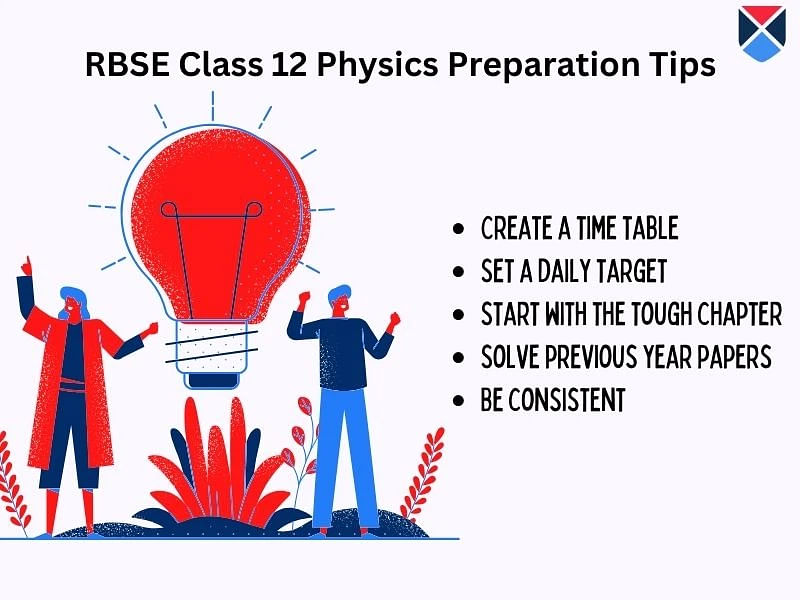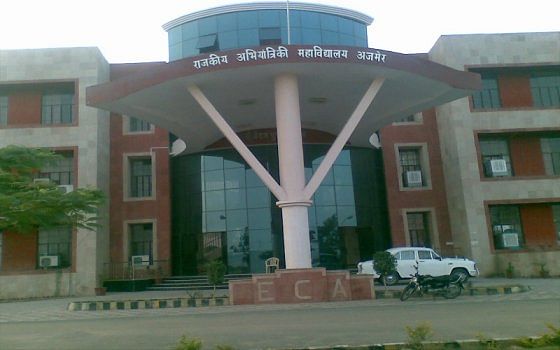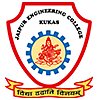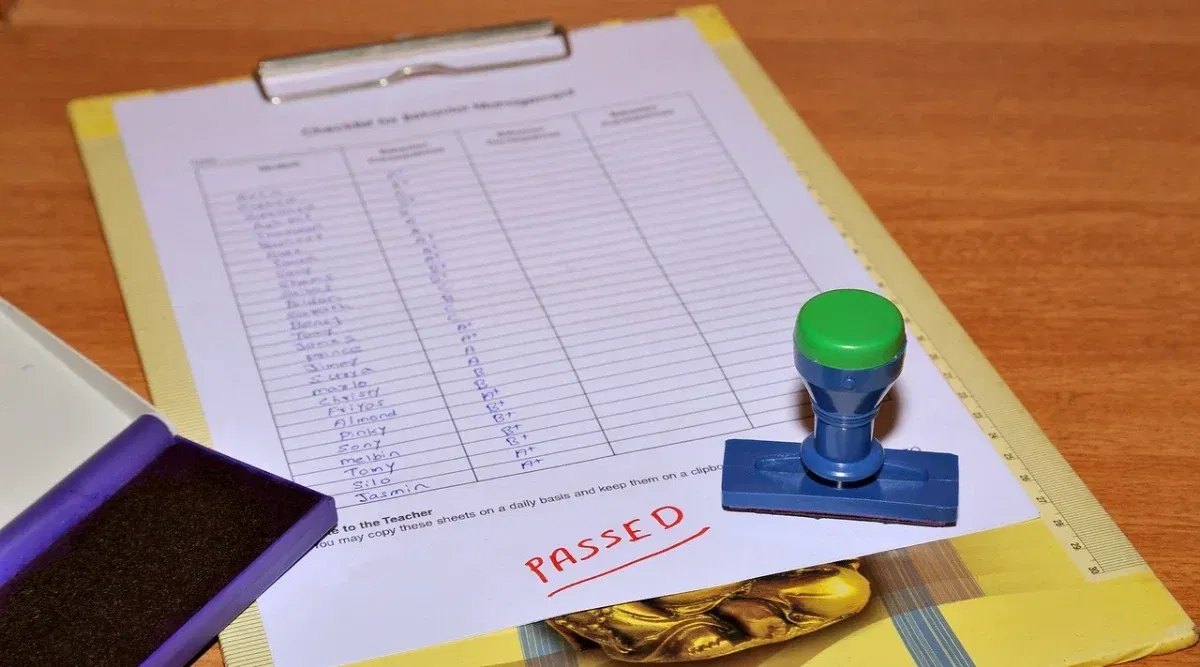RBSE Class 12 Physics Latest Syllabus 2025-26: Download Latest and Revised RBSE Class 12th Physics Syllabus PDF
Table of Contents
The RBSE 12th Physics syllabus 2026 consists of 9 units and 14 chapters, and it covers a wide range of units, including electrostatics, current electricity, optics, and more. Students can master the concepts of Physics easily if they have understood the syllabus and have a thorough knowledge of the topics covered in the RBSE 12th books.
Moreover, the board will conduct the RBSE 12th Physics paper for 100 marks, out of which 70 is allowed for theory, and 30 is for practical. Candidates must secure the minimum passing marks in both papers to qualify for the exam.
RBSE 12th Physics Syllabus 2026: Download
The RBSE class 12th Physics syllabus 2026 will be available on the official website. The direct link to download the Physics syllabus will be added below.
| Particulars | PDF Link |
| RBSE 12th 2026 Physics Syllabus | To be updated |
RBSE 12th Physics Syllabus 2023-24: Download PDF
Students must download the RBSE 12th 2023-24 Physics syllabus in PDF format and must start preparing for the upcoming board exams. Moreover, the direct link to download the Physics syllabus is provided below.
| Particulars | PDF Link |
| RBSE 12th Physics Syllabus 2023-24 | Download Now |
Class 12 Physics Syllabus 2026 RBSE: Course Structure
Students should know the thorough class 12 Physics syllabus 2026 RBSE to score good marks. Some questions covering key topics from the Physics syllabus are asked in the competitive exams as well. Refer to the table below for more details.
|
Units
|
Name of the unit
|
Marks
|
|
1
|
Electrostatics
|
|
|
|
Chapter–1: Electric Charges and Fields
|
4
|
|
|
Chapter–2: Electrostatic Potential and Capacitance
|
3
|
|
2
|
Chapter–3: Current Electricity
|
4
|
|
3
|
Magnetic Effects of Current and Magnetism
|
|
|
|
Chapter–4: Moving Charges and Magnetism
|
4
|
|
|
Chapter–5: Magnetism and Matter
|
3
|
|
4
|
Electromagnetic Induction and Alternating Currents
|
|
|
|
Chapter–6: Electromagnetic Induction
|
4
|
|
|
Chapter–7: Alternating Current
|
5
|
|
5
|
Chapter–8: Electromagnetic Waves
|
2
|
|
6
|
Optics
|
|
|
|
Chapter–9: Ray Optics and Optical Instruments
|
7
|
|
|
Chapter–10: Wave Optics
|
5
|
|
7
|
Chapter–11: Dual Nature of Radiation and Matter
|
4
|
|
8
|
Atoms and Nuclei
|
|
|
|
Chapter–12: Atoms
|
4
|
|
|
Chapter–13: Nuclei
|
3
|
|
9
|
Electronic Devices
|
7
|
|
|
Chapter–14: Semiconductor Electronics: Materials, Devices and Simple Circuits
|
4
|
|
TOTAL
|
56
|
Read more: RBSE 12th Exam Pattern 2024
RBSE 12th 2026 Physics Syllabus: Topic-Wise Details
The RBSE 12th Physics syllabus follows the latest exam pattern, which will enhance the understanding level of the candidates. The syllabus pattern will guide the candidates in knowing their strengths and weaknesses. Furthermore, students can refer to the table below for more details.
| Unit | Unit Name |
| Part A - Electrostatics | |
| I. Electric Field |
Electric Charges: Type and Properties of Charge, Columbus law, forces between multiple charges; Superposition Principle, Electric field, electric field due to a point charge, electric field due to the system of charges, electric field lines and their properties, electric dipole, electric dipole moment, electric field due to an electric dipole, torque on a dipole in uniform electric field. |
| II. Gauss's Law and its applications |
Electric flux, Continuous Charge Distribution, Statement of Gauss's Law and its derivation, Use of Gauss’s Law to find field due to (i) infinitely long straight wire (ii) uniformly charged infinite non conducting sheet (iii) uniformly charged infinite conducting plate (v) Uniformly charged Conducting Sphere (vi) Uniformly charged Non-Conducting Sphere, Force on the surface of charged Conductor, Energy Per Unit Volume in an Electric Field, Equilibrium of Charged Soap Bubble. |
| III. Electric Potential |
Electric Potential due to a point charge, a dipole and a system of charges; equipotential surfaces, Relation between Electric Field and Electric Potential, Calculation of Electric Potential (ii) due to charged conducting sphere (iii) due to charged non-conducting sphere, the electrical potential energy of a system of charges, Work done and Kinetic Energy of Electric Dipole in an electric field. |
| IV. Electric Capacitance |
Conductors and insulators, free charges, and bound charges inside a conductor, Dielectrics substance and Polarization, Capacitance of capacitor, Capacitance of an isolated Spherical Conductor, Capacitor, the capacitance of Parallel Plate Capacitor (i) Air or Vacuum (ii) partially filled dielectric medium, The capacitance of Spherical Capacitor, Combination of Capacitors in series and in parallel, Energy Stored in a Capacitor, Redistribution of Charges, and Loss of Energy by Combination of Charged Conductors. |
| Part B - Current Electricity | |
| V. Electric Current |
The flow of electric charges in a metallic conductor, drift velocity, mobility, and their relation with electric current, Ohm's law derivation, ohmic and non-ohmic resistance, The internal resistance of a cell, emf and terminal voltage of a cell, combination of cells in series and in parallel, Electrical Energy |
| VI. Electric Circuit |
Kirchhoff's laws and Applications, Wheatstone Bridge, Metre Bridge, Potentiometer – Principle, Standardisation and Sensitivity, Applications to Potentiometer – (i) Internal Resistance of a Primary Cell (ii) Comparision of Electro-Motive Forces of Two Cells (iii) Calibration of Voltmeter and Ammeter. |
| Part C - Magnetic Effects of Electric Current | |
| VII. Magnetic Effects of Electric Current |
Oersted's experiment and Conclusion, Biot-Savart’s Law, Magnetic Field due to a Long and Straight CurrentCarrying Conductor, Magnetic Field Due to current carrying circular loop, Comparison of small Current Loop with a Magnetic Dipole, Helmholtz Coils, Force on Moving Charge in Magnetic Field, Motion of Charge in Magnetic Field, Force on a current-carrying conductor in a uniform magnetic field, Force between two parallel current-carrying conductors, Definition of Standard Ampere, Torque on a Current-Carrying Rectangular Loop in Uniform Magnetic Field, Galvanometer- Suspended Coil Galvanometer, Pivoted Coil Galvanometer and Conversion to Ammeter and Voltmeter, Ampere’s Law, Magnetic Field due to Infinitely Long and Straight Current-Carrying Conductor, Solenoid, Field Inside an Infinitely Long Solenoid, Behavioral Comparison of Bar Magnet and Current Solenoid, Magnetic Field on the Axis of Toroid. |
| Part D - Magnetism and Properties of Magnetic Materials | |
| VIII. Magnetism and Properties of Magnetic Materials |
Neutral Point, Earth's Magnetism, Elements of Earth’s Magnetism, Magnetism and Gauss Law, Behaviour of substances in Magnetic Field, Intensity of Magnetisation, Magnetizing Field, Magnetic, Susceptibility and Magnetic Permeability, Relation between Different Magnetic Quantities, Magnetic, Hysteresis and B-H Curve (Hysteresis Curve), Curie Law and Curie Temperature |
| Part E -Electromagnetic Induction and Alternating Currents | |
| IX. Electromagnetic Induction |
Magnetic Flux, Electromagnetic induction; Faraday's laws of Electromagnetic Induction: Lenz's Law, Induced Current, and charge, Fleming’s Right Hand Rule, Induced EMF in- a conductor rod, moving in a Uniform magnetic Field, a Rectangular Loop Moving in a Non-Uniform Magnetic Field, and Energy Conservation, a Metal Disc Rotating in a Uniformatic Conetic Field, Self and Mutual induction. |
| X. Alternating Current |
Direct Current, Alternating Currents, Instantaneous, Peak, Average and RMS Value of Alternating, Current/Voltage; Phase Relation Between Alternating, Voltage And Alternating Current In Different Types Of AC Circuits And Phasor Diagram – (I) Pure Ohmic Resistance (II) Pure Inductance (III) Pure Capacitance (IV)Series Combination of Resistance and Inductance (V) Series Combination of Resistance and Capacitance (VI) Series Combination of Resistance, Inductance and Capacitance, Series LCR Resonance Circuit, Bandwidth Quality Factor In A Series Resonance Circuit, Average Power In AC Circuits, Transformer. |
| Part F - Optics | |
| XI - Ray Optics | Optical Fibers, Lenses, Thin Lens Formula, Lens Maker’s Formula, Magnification, Power Of a Lens, Combination Of Thin Lenses In Contact, Refraction Of Light Through A Prism. Dispersion of Light, Optical Instruments - Simple Microscopes, Compound Microscopes, Astronomical Telescopes (Reflecting And Refracting) And Their Magnifying Powers. |
| XII - Nature of Light | Nature of Light, Huygens’s Wave Theory and Wavefront, reflection and refraction of plane wave at a plane surface, Interference of Light and Coherent Sources, Necessary Conditions for Interference, Young's Double Slit Experiment, Analytical treatment of Interference and expression for fringe width, Interference Fringes Produced by White Light, Diffraction, Comparision of Diffraction of Sound and Light, Type of Diffraction, Diffraction due to a single slit, width of central maximum, Difference Between Interference and Diffraction, resolving power of microscope and astronomical telescope |
| Part G - PhotoElectric Effect Matter Wave | |
| XIII. PhotoElectric Effect Matter Wave | Photoelectric Effect, Experimental Results of Photoelectric effect and their interpretation, Concept of Photon, Einstein's Photoelectric Equation and Explanation of Experimental Results of Photoelectric effect on the basis of this Equation, Dual Nature of Light, De-Broglie Hypothesis |
| XIV. Atomic Physics | Rutherford’s Model of Atom, Bohr Model of Atom, Line Spectrum of Hydrogen and its Explanation, Limitation of Bohr Model |
| XV. Nuclear Physics | Nuclear Structure, Size of the Nucleus, Atomic Mass Unit, Mass Defect and Nuclear Binding Energy, Nuclear Energy, Nuclear Fission, Controlled and Uncontrolled Chain Reactions, Nuclear Reactor, Nuclear Fusion. |
| Part I - Electronics | |
| XVI. Electronics | Energy bands in Solid, Classification of Conductors, Semiconductors and Insulators, Intrinsic and Extrinsic Semiconductor, Minority and Majority charge Carriers, P-N Junction Diode, Forward and Reverse bias Characteristic Curve, Avalanche and Zener Break Down, Use of P-N junction diode as a Half Wave and Full Wave Rectifier, Junction Transistor, Operation of a Transistor, Transistor Circuit Configurations- Common Base, Common Emitter and Common Collector, Transistor Characteristic Curves - Common Base and Common Emitter Configuration and Relation. |
Also Check for all Subjects: RBSE 12th Syllabus 2024
How to Prepare using RBSE 12th Physics Syllabus 2026?
Students must understand the RBSE 12th Physics syllabus so that they can effectively plan their study plan, set goals, and focus on each topic. Students must also use the exam pattern to understand the difficulty level of the question papers. Some of the points to follow are mentioned below:
- Students must track their performance level by constantly revising the RBSE 12th Physics syllabus.
- Creating a study plan will allow the students to distribute their time equally for each topic.
- Students should increase their practice and regularly revise challenging topics.
- Candidates must also use the previous year's question paper for Physics to grasp an idea about the pattern.
- To achieve good results in the RBSE class 12th, finish the full syllabus at least one month ahead.
Refer to the image mentioned below to check the preparation tips for the class 12 Physics syllabus 2026 RBSE.

Read more: RBSE 12th Sample Papers 2024

![Maharshi Dayanand Saraswati University, [MDSU] Ajmer](https://media.getmyuni.com/azure/college-image/small/maharshi-dayanand-saraswati-university-mdsu-ajmer.webp)





![Ajmer Institute of Technology, [AIT] Ajmer](https://media.getmyuni.com/azure/college-image/small/ajmer-institute-of-technology-ait-ajmer.jpg)

![Aryabhatta College of Engineering and Research Centre, [ACERC] Ajmer](https://media.getmyuni.com/azure/college-image/small/aryabhatta-college-of-engineering-and-research-centre-acerc-ajmer.jpg)





















